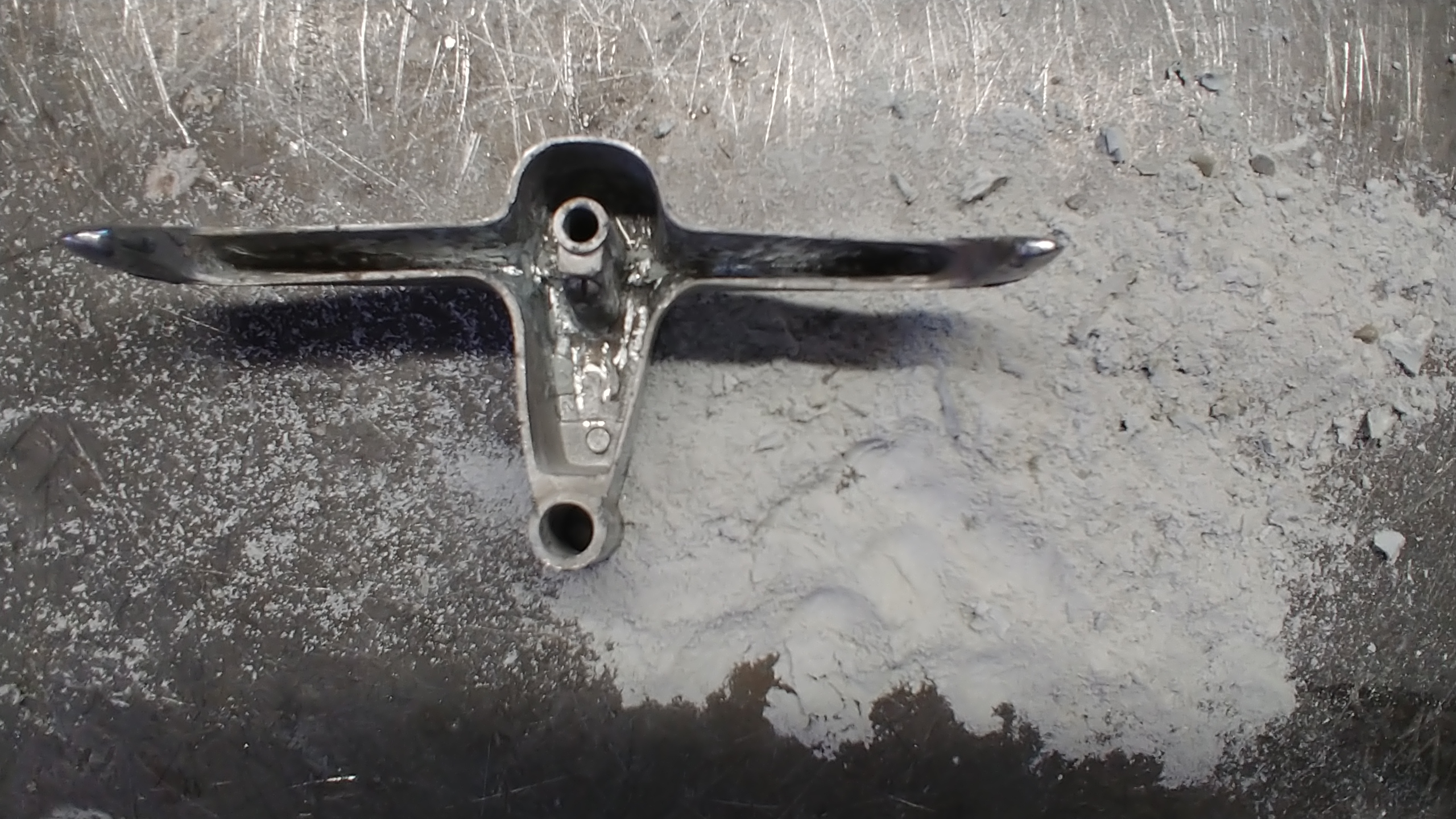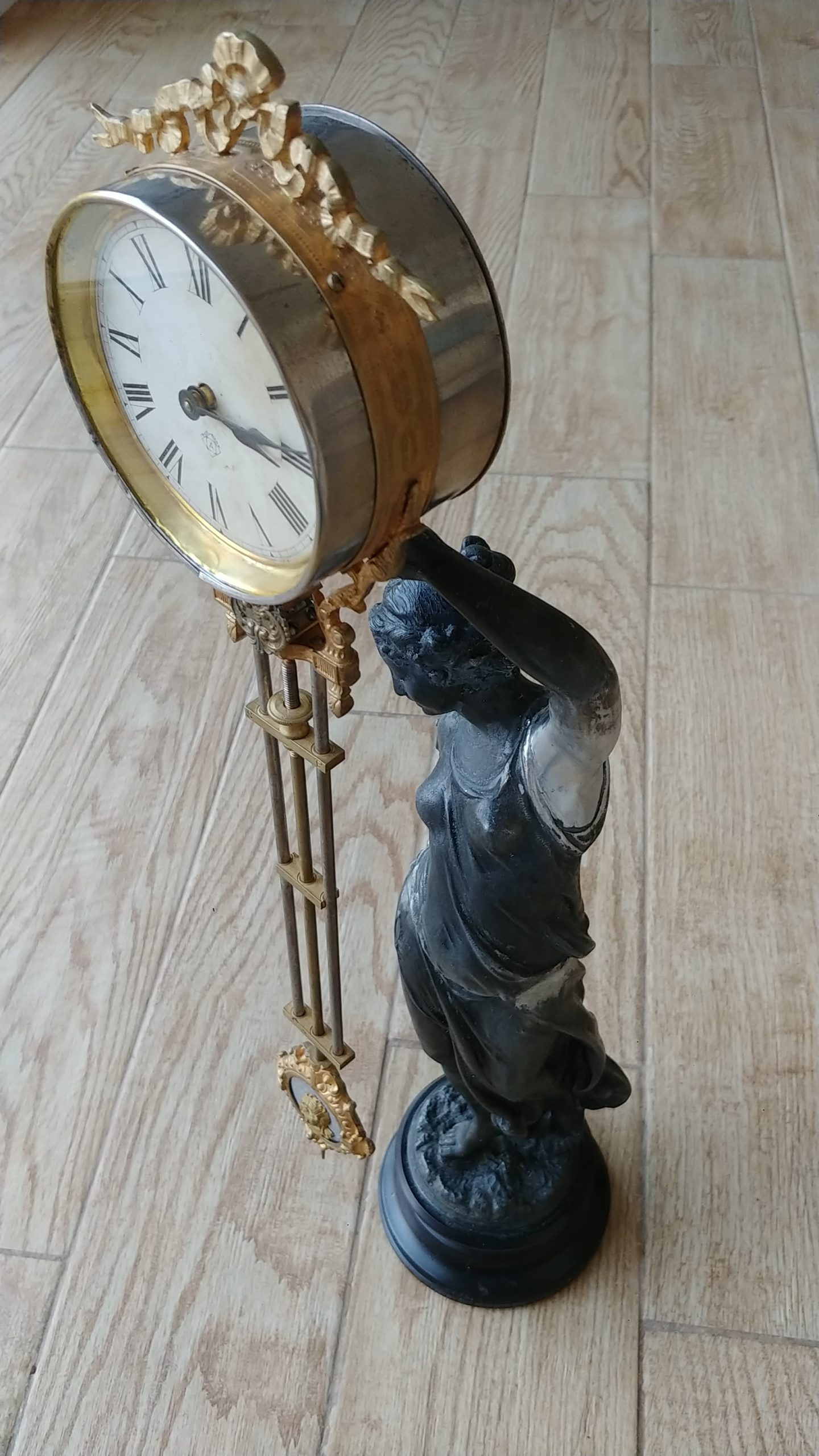Repairing pot Metal
Trusted by Hundreds for Our Pot Metal Welding, Modification & Fabrication.
About the photo
This photo is of the completed Pot Metal repair of a 34 Nash Lafayette Grille. It had been backed into while at a car show and broke off the lower left section of the grille.


Repairing Pot Metal.
That said, let’s take a closer look at these pot metal repair options and then ask your self which would best suit your needs?


About the photo
This Antique Ansonia AAAAN Swinging clock was broken in three pieces – at the waste and the supporting arm.
Repairing Pot Metal with Low-temp Flux & Solder.
This method of pot metal repair has been around for quite a while and is one of the more user friendly ways of repairing pot metal. It can be done by using a traditional propane torch, double-cut file, wire brush and one of the leading brands of soft solder and flux. And if done properly you can get a pretty good repair; as so it would seem… There are many “how to” YouTube videos showing how easy it is to do, funny thing is none of them allow comments on any of the videos. One can only imagine why comments are not allowed…??
The cost. Some soft solder kits are really over-priced for the average, person with no experience. Before you can perform a soft solder repair on a part you plan to have re-chromed, you must have the local chrome shop strip the existing chrome off the part. Otherwise if this is not done, the process of removing the old plating will cause the solder will come apart costing you more time or money.
And finally the major problem with pot metal solder repairs. For some reason after the part(s) have been plated many platters have experienced issues with the solder melting under the fresh plating from the heat caused by the polishing process. 90% of the time the new plating tends to develop bubbles around the repair. When this occurs, the shop must strip the new plating down to the base metal re-cleaning etc. for a second attempt. This has been confirmed by numerous chrome shops who’ve attempted to use soft solder for repairing pot metal.
However, if you plan to paint, then solder may be the way to go if it’s a decorative part not subject to any vibration??
About this photo
This photo illustrates pot metal molding pre-plated with copper. This allows the soft low-temp solder to bond to the molding filling imperfections. Or in the case of this illustration, extending the length of the molding. This type of repair is very common with chrome shops. Read full article here.
Brazing Pot Metal? Hmmm…?
The other day I was researching what others are searching for in Google, Bing, Duck Duck Go etc. I came across someone asking about brazing pot metal. Well, to make a long story short, I recently thought that pot metal couldn’t be brazed, but recently I came across a situation where this pot metal project I was working on would not weld due to the level of casting contamination. – It wouldn’t melt. All it would do is burn. This happens when there is too much corrosion(rotten or dead material) in the metal…
To solve this problem, I used a small torch and heated the the filler rod and the part and rubbed it with the filler rod until the rod would flow onto the base metal before it started to burn. It worked out, but not the perferred mothed by any means. Nevertheless it was much stronger than soldering.
About this photo
This is a pot metal hood ornament for a 1954 Chrysler sedan. The mounting boss was broken off leaving a hole in the topside of the molding.
The good news is, with good understanding and the right equipment one can successfully weld pot metal like a surgeon! Unfortunately to my knowledge there is only one piece of equipment in existence and only one who understands how to use it….
Long story short, Pot metal can be easily welded and is far more cost effective and is a permanent solution that doesn’t have any of the draw-backs previously mentioned with the other repairs. With welding pot metal, once the weld beads are smoothed down, it can go straight to stripping, copper, nickel and finally chrome. Your chrome shop will love you for it. Guaranteed!


